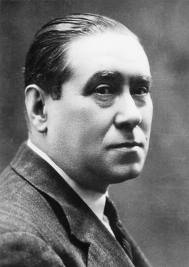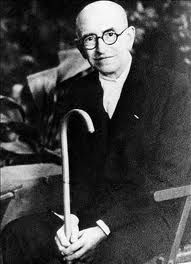Spanish Music of the XX Century
From Joaquin Rodrigo to Manuel de Falla, Spanish orchestral music found its true form in the XX century, at a time when it found itself in an impasse, split between the increasing favour gained by popular forms of expression, which were being produced at a staggering pace through the zarzuelas, the received tradition of the Spanish guitar, which had been well instilled in the popular culture by this time, and the international dominance of orchestral music.
while the emergence of nationalistic themes throughout the second half of the XVIII and all of the XIX century resulted in the formulation of a different tone, as it were, for German, French and Italian music above all, in Spain the national flavour steered music away from orchestral works.

Nevertheless, there was still a substantial output of instrumental music, closely linked or influenced by the European tradition during the first half of the XX century. Such production was especially punctuated by the presence of three outstanding personalities, whose footprint in Spanish music has become not only important, but rather indelible.
The first of these characters is Joaquín Turina. Born in Sevilla in 1882, he was deeply influenced through his family heritage by Italian culture, and as a young man he moved to Paris, where he completed his education in composition and the piano. With the break of World War I, Turina went back to the relative safety of his homeland, where he would contribute to extend the orchestral tradition.
His music remained throughout closely linked to the Andalusian landscape of his childhood, anchored in the impressionistic technique prevalent in Paris at the time of his exile and patently present in the work of Maurice Ravel or Claude Debussy, both of them acquaintances of his. Among his most accomplished compositions stand out the 'picturesque sonata' Sanlúcar de Barrameda (1922), his suite Sevilla (1909) and the Danzas fantásticas (Fantastic Dances) from 1920.
Turina also experimented with zarzuelas, producing three of them in his career, but his work is overwhelmingly orientated towards orchestral and chamber music, hitting the peak of his popularity with the collections of Dances Gitanes (Gipsy Dances) from 1930 and 1934.
The second personality in question is Manuel de Falla. A contemporary of Turnia's, the careers of the two composers followed similar paths in their early days, as they both left Spain for Paris in the early days of the XX century and both were forced to return with the break of The Great War.
Manuel de Falla

While Manuel de Falla's professional life goes through so many stages and is so extensive that it is difficult to identify which, exactly, was his most proficient time, it remains certain that his days in Paris marked his early stages and led him to produce some of his most affecting work. Among them, Siete canciones populares españolas (Seven Popular Spanish Songs) and the Fantasia Baetica are typical of his increased nationalism blended into compositions for the piano.
But once Manuel de Falla finds himself back in Spain, the impact of folklore and nationalism begins to give way in his work, in favour of a more traditional melody, which is still enriched by the Spanish sound, as it were. This can be seen in his ballet, El amor brujo (Love the Magician), for instance, written in Madrid, or in his Harpsichord concerto, from 1926, which he composed when he was in Granada.
Following the end of the Spanish Civil War, Manuel de Falla was forced to emigrate once again, this time to Argentina, where he would live until his death in 1946.
Joaquín Rodrigo

The third landmark in Spanish music of the XX century is Joaquin Rodrigo. Slightly younger than the other two, he was born in Valencia in 1901. He moved to Paris in 1927 and spent much of his youth there, before returning to Madrid in 1939. A year later, his most famous piece debuted in barcelona: the Concierto de Arnajuez.
A fixed entry in the international repertoire, Joaquin Rodrigo's Concierto de Aranjuez is perhaps the most representative single piece of music in the Spanish orchestral tradition. Evocative of a different time in the idyllic surroundings of the Palace of Aranjuez, the concert incorporates the Spanish guitar into a fully developed setting of instruments that serve to elevate the sounds of the strings and that unequivocally vindicates its standard as a recital instrument.
